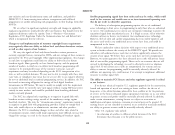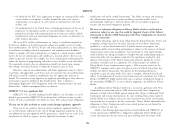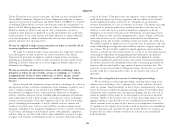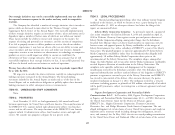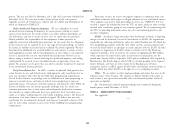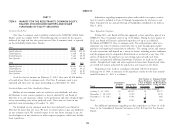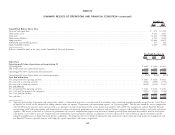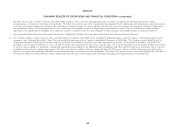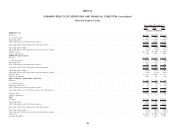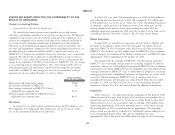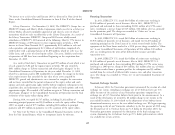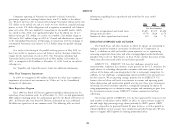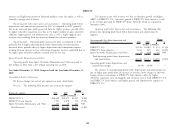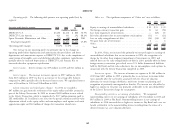DIRECTV 2011 Annual Report Download - page 58
Download and view the complete annual report
Please find page 58 of the 2011 DIRECTV annual report below. You can navigate through the pages in the report by either clicking on the pages listed below, or by using the keyword search tool below to find specific information within the annual report.DIRECTV
SUMMARY RESULTS OF OPERATIONS AND FINANCIAL CONDITION—(continued)
We believe this measure is useful to investors, along with GAAP measures (such as revenues, operating profit and net income), to compare our operating performance to other
communications, entertainment and media service providers. We believe that investors use current and projected operating profit before depreciation and amortization and similar measures
to estimate our current or prospective enterprise value and make investment decisions. This metric provides investors with a means to compare operating results exclusive of depreciation
and amortization expense. Our management believes this is useful given the significant variation in depreciation and amortization expense that can result from the timing of capital
expenditures, the capitalization of intangible assets, potential variations in expected useful lives when compared to other companies and periodic changes to estimated useful lives.
Operating profit before depreciation and amortization margin is calculated by dividing Operating profit before depreciation and amortization by Revenues.
(2) Free cash flow, which is a financial measure that is not determined in accordance with GAAP, can be calculated by deducting amounts under the captions ‘‘Cash paid for property and
equipment’’ and ‘‘Cash paid for satellites’’ from ‘‘Net cash provided by operating activities’’ from the Consolidated Statements of Cash Flows. This financial measure should be used in
conjunction with other GAAP financial measures and is not presented as an alternative measure of cash flows from operating activities, as determined in accordance with GAAP. Our
management and our Board of Directors use free cash flow to evaluate the cash generated by our current subscriber base, net of capital expenditures, for the purpose of allocating resources
to activities such as adding new subscribers, retaining and upgrading existing subscribers, for additional capital expenditures and other capital investments or transactions and as a measure
of performance for incentive compensation purposes. We believe this measure is useful to investors, along with other GAAP measures (such as cash flows from operating and investing
activities), to compare our operating performance to other communications, entertainment and media companies. We believe that investors also use current and projected free cash flow to
determine the ability of revenues from our current and projected subscriber base to fund required and discretionary spending and to help determine our financial value.
34


